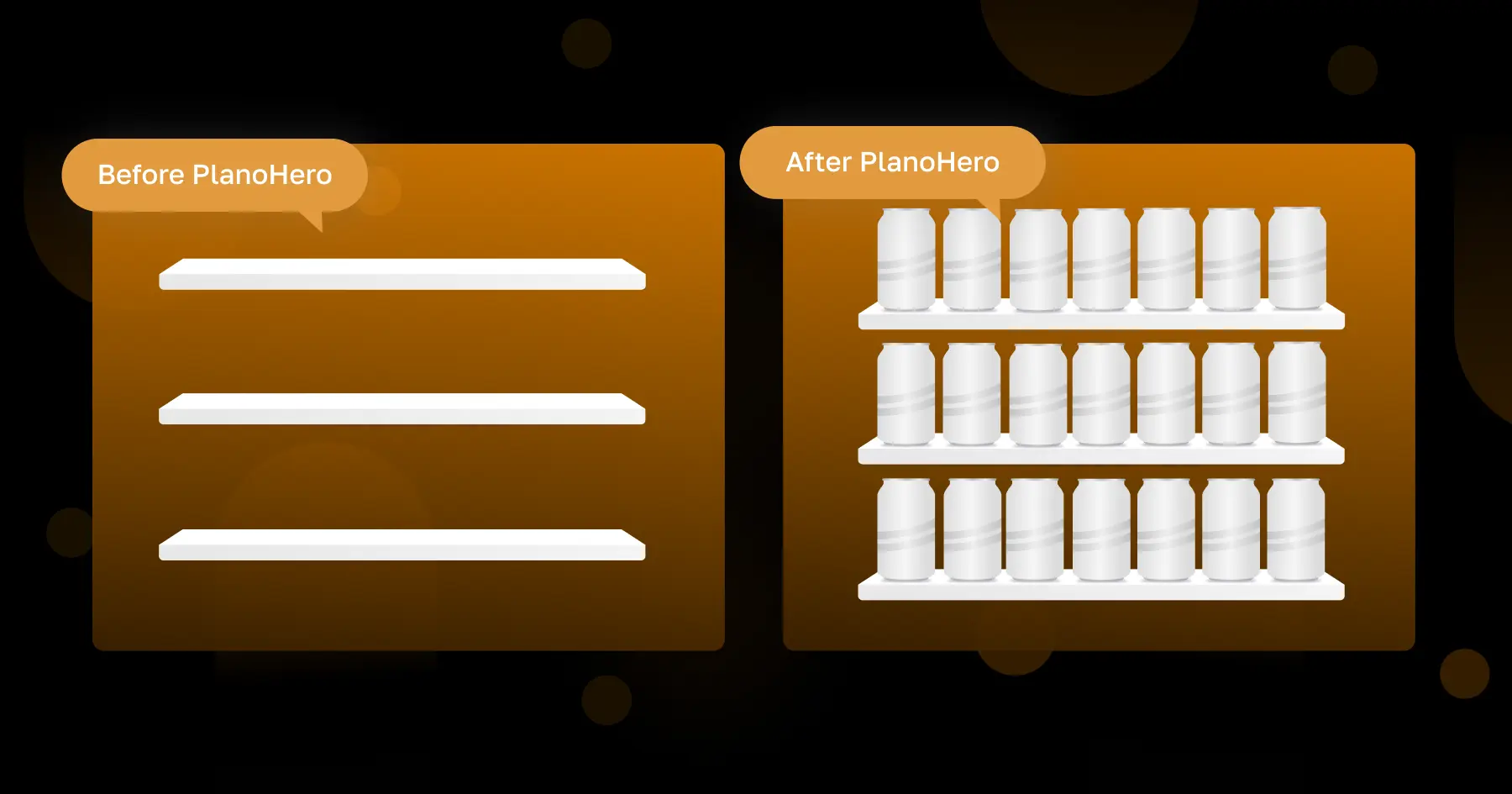Problem nadmiernych zapasów oraz pojawiania się towaru nielikwidnego występuje u każdego detalisty. Nawet jeśli dokładnie planujesz i prognozujesz sprzedaż, musisz być przygotowany na to, że coś może pójść niezgodnie z planem. W takiej sytuacji należy szukać sposobów rozwiązania problemów.
Czasami towar się nie sprzedaje, ponieważ znajduje się w miejscu mało widocznym dla klienta. I nie byłoby problemu z jego zakupem, gdyby znajdował się w dobrze widocznym miejscu. Produkt powinien być widoczny, łatwo dostępny, z wyraźnie oznaczoną ceną i informacją o nim (tabliczka lub ekran reklamowy). Aby przyciągnąć uwagę do produktu, zmień jego położenie. Aby prawidłowo rozmieścić cały towar w sklepie i osiągnąć rentowny merchandising, zacznij pracować z planogramami i zautomatyzuj ten proces. Z niechodliwymi towarami można sobie poradzić, konfigurując efektywną ekspozycję, która będzie sprzedawać twoje produkty. Klienci często zaczynają interesować się produktem po tym, jak zobaczą go w nowym świetle lub w nowym miejscu.
Dlaczego w sklepach pojawia się towar nielikwidny
Główne przyczyny występowania nadmiaru towarów niechodliwych:
Niewłaściwe położenie. Wszystko jest bardzo proste. Klienci nie kupują towaru, którego nie widzą. Skup uwagę na produkcie, stosując zasady merchandisingu, marketingu oraz biorąc pod uwagę szczególne potrzeby klientów.
Brak popytu. Oczywiście cały asortyment w sklepie nie może jednocześnie cieszyć się wysokim popytem i szybko się sprzedawać. Istnieją kategorie produktów, które nie są popularne wśród klientów i będą zalegać jako nielikwid. Ale są również towary interesujące dla wąskiej grupy klientów. Takie produkty będą sprzedawać się stale, lecz powoli.
Cena (zbyt wysoka lub zbyt niska). Klienci mają wątpliwości, gdy produkt jest nieuzasadnienie drogi lub zbyt tani. Niejasne ceny odstraszają kupujących. Zwłaszcza gdy ten sam produkt w sklepie konkurencji jest tańszy. Dlatego należy odpowiedzialnie podejść do kwestii ustalania cen.
Co robić, aby sprzedać towar niechodliwy
Rabaty i wyprzedaże
Pamiętaj, że wyprzedaże powinny odpowiadać potrzebom twoich klientów. Dlatego rabaty należy stosować na produkty, które zachęcą właściwe osoby do zakupu twoich towarów. Detaliści często spotykają się z nadmiarem zapasów pod koniec sezonu. Dlatego zanim skoncentrujesz się na nowych produktach sezonowych, przeprowadź sezonową wyprzedaż nielikwidów i zminimalizuj ilość towarów niechodliwych.
Oferuj rabaty. Jednak podchodź do nich ostrożnie. Ograniczaj je czasowo. Jeśli będziesz ciągle organizować wyprzedaże, klienci przestaną kupować produkty w regularnych cenach i będą czekać na kolejne obniżki. Uruchamiaj wyprzedaże towarów niechodliwych z ograniczeniem czasowym. Ma to efekt psychologiczny. Świadomość, że wyprzedaż wkrótce się skończy, skłania klientów do szybszego zakupu. Ważne jest, aby budować oczekiwanie, dlatego promuj akcje w sklepie i poza nim. Wysyłaj newslettery i reklamuj wyprzedaże w mediach społecznościowych. Organizuj wyprzedaże skierowane do konkretnych grup klientów. Dzięki temu twoje towary szybciej zmienią się w gotówkę.
Efektywny merchandising
Towar niechodliwy można sprzedać, zmieniając jego położenie na półkach. Umieść produkty na wysokości wzroku, a szanse, że zostaną zauważone przez kupujących, znacząco wzrosną. Zaplanuj rozmieszczenie towarów niechodliwych za pomocą planogramów. Opracuj efektywny merchandising sklepu, uwzględniając towary nielikwidne. Skonfiguruj ekspozycję w planogramach tak, aby twoje mało popularne produkty znalazły się obok tych, które dobrze się sprzedają — w widocznych miejscach na półkach oraz w strefach o dużym natężeniu ruchu klientów. Umieszczaj produkty przy wejściu, w strefie kas oraz na czołach regałów.
Można również rozważyć cross-merchandising. Umieść towary niechodliwe obok bestsellerów. To powszechna praktyka, która przynosi efekty. Możesz łączyć takie produkty w zestawy. Klienci zainteresowani zakupem popularnego towaru najprawdopodobniej odbiorą zestaw z dodatkowym produktem jako korzystny zakup. Jeśli produkt sprzedaje się powoli, może to pomóc przyspieszyć sprzedaż. A jeśli ta taktyka merchandisingowa nie zadziała, być może trzeba będzie rozważyć obniżenie ceny.
Połącz kilka sztuk jednego produktu i sprzedawaj je jako zestaw w obniżonej cenie. To możliwość, aby szybko pozbyć się towaru nielikwidnego.
Zwróć uwagę na analizę sprzedaży i ruchu klientów w sklepie, aby ustalić, które strefy sali sprzedaży odwiedzają kupujący. Wykorzystaj te informacje, decydując, gdzie umieścić towary niechodliwe.
Promocje i reklama
Zaproponuj towar niechodliwy jako prezent przy zakupie innego produktu podczas akcji promocyjnych w sklepie. Informuj o promocjach w mediach społecznościowych i innych platformach internetowych, mówiąc o tym, że oferujesz produkty promocyjne oraz zestawy w niskich cenach. To może pomóc znaleźć nowych klientów.
Analiza wskaźników sklepu
Dowiedz się, które produkty sprzedają się dobrze, a na które należy zwrócić uwagę. Prognozuj popyt i zamawiaj nowy towar, biorąc pod uwagę potrzeby, analizę wcześniejszych sprzedaży oraz prognozy przyszłych. Do tego wykorzystaj platformę analityczną Datawiz BES. Są tam dostępne raporty analityczne dla każdego wskaźnika sklepu. To możliwości dla detalisty, aby uzyskać informacje o dynamice sprzedaży oraz zarządzać stanami magazynowymi. Wykrywaj na czas towary niechodliwe w swoim sklepie i planuj strategie pracy oraz sprzedaży takich produktów.
Przekaż towar na cele charytatywne
Towary nielikwidne to dodatkowe koszty nie tylko ze względu na środki w nie zainwestowane, ale także dlatego, że zajmują miejsce w sklepie i magazynie. Jeśli pozostały ci towary, których nie możesz sprzedać, przekaż je na cele charytatywne. Istnieje wiele organizacji, które mogą potrzebować właśnie takich produktów.
Detaliści mówią, że jeśli nie możesz sprzedać towaru w ciągu 90–120 dni, najlepszym rozwiązaniem jest pozbyć się go i zwolnić miejsce w sklepie.
Komunikacja z dostawcą
Dowiedz się od dostawców, czy istnieje możliwość zwrotu lub wymiany towaru i na jakich warunkach. Taka opcja jest możliwa, gdy produkt, który po raz pierwszy zamówiłeś u dostawcy, nie sprawdził się na twoim rynku. Lub w innej sytuacji — kiedy dostawca ceni cię jako klienta, nie chce zrywać relacji i wychodzi ci naprzeciw. W każdym przypadku komunikacja między detalistą a dostawcą jest kluczowa.
Sprzedaj towar nielikwidny firmie specjalizującej się w odkupie zapasów
Istnieją firmy, które skupują nadmierne zapasy towarów z dużym rabatem, a następnie je odsprzedają. Detalista nie uzyska tu zysku, ale pozwoli to uwolnić sklep i magazyn od zbędnych produktów oraz nie ponosić kosztów ich przechowywania.
Wnioski
Wypróbuj te strategie walki z towarami niechodliwymi. Eksperymentuj, łącz metody, aby poprawić swoją sprzedaż. Szukaj sposobów sprzedaży towarów nielikwidnych i monitoruj wskaźnik rotacji zapasów, który pokazuje, ile razy zapasy zostały sprzedane i uzupełnione w określonym czasie.
Szukasz oprogramowania tworzenia planogramów?
Wypróbuj bezpłatną wersję demonstracyjną PlanoHero




